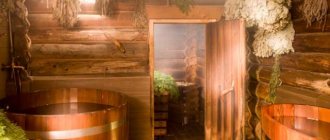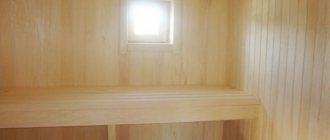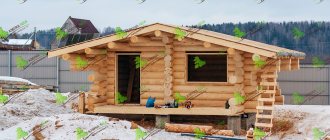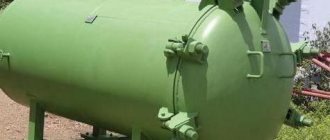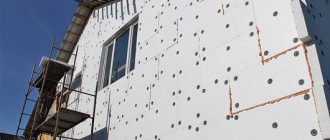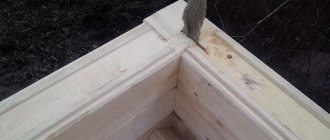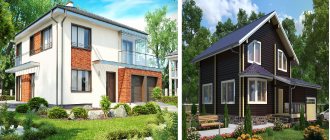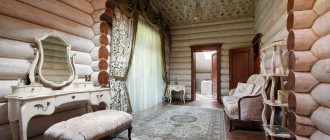Linden is a universal tree that gives itself completely to a person without reserve. Linden is used for medicinal purposes and arts and crafts. Linden honey is highly valued. It was used in the manufacture of turning blanks and even in aircraft construction. But most of all it is used in construction. And not only as a facing material, but even for the construction of buildings.
general characteristics
Linden is the common name of trees belonging to the genus Linden (lat.Tilia), growing in the European and Asian territories of Russia. The tree prefers fertile, well-draining soil. Grows equally well in sun and partial shade. Sufficiently resistant to low winter temperatures and summer droughts.
People grow linden for its wood, which can be easily carved by hand, for making sculptural crafts, all kinds of toys and souvenirs. Leaves, flowers, bark and wood are widely used for medicinal purposes. More than 30 species of linden are known. Growing conditions and species are not significant, but they change the physical and mechanical properties of wood.
Linden can easily reach impressive sizes from 20 to 40 meters in height. Depending on the type, it has a pyramidal or rounded crown with obliquely heart-shaped leaves from 6 to 20 cm at the crossbar. Young trees have almost smooth gray bark, which over the years develops into brown, furrowed bark.
Linden trees usually live for several hundred years. Wild trees are found to be 800 years old or more.
Blooms in late spring. The flowers are yellow, fragrant and arranged in drooping clusters. Flowers contain both types of reproductive organs (stigma and stamens); they are not capable of self-pollination. The strong aroma of the flowers attracts bees, the main pollinators of the linden tree.
Bees use nectar from linden flowers to produce delicious honey. Flowers are a rich source of volatile oils, which are responsible for the pleasant aroma of this plant. Aromatic flowers are popular and often consumed in the form of teas and herbal infusions, in natural and dried forms.
Why is this board good for a builder?
If you want to purchase high-quality lumber, linden is perfect for this honorable role, because it:
- Easy to process. This type of wood is unusually soft to work with and can be used to make products of any complexity.
- It has a homogeneous wood structure. The aged linden rings are so dense that when you cut a log radially, you won’t even notice them right away; only if you look closely, you can see a thin merging pattern of fibers.
- It has a beautiful and noble color. The wood is painted in a rich milky color with a pink tint. The older the tree, the stronger the reddish tint with a soft golden “additive” appears in it, which is very reminiscent in its color of valuable wood species (for example, walnut).
- Durable and lightweight. Soft to work with, linden turns into a hard, durable “stone” after drying, which increases the authority of lumber in the eyes of manufacturers of wooden products.
- Flexible and durable. It bends and polishes well, which is very actively used in the manufacture of complex wooden structures.
- Resistant to moisture. Due to its extreme density, wood of this type does not absorb water well; it is better protected by nature from rotting and bio-attacks.
The linden board hides several more features, which, in fact, played a crucial role in determining its main area of application. Wood contains a tiny amount of resin substances; due to its high density, the material heats up slowly under high temperatures and remains cool to the touch for a long time. These are the qualities a good bath board should have.
Lumber is used to make seats (shelves) in the steam room, where, in extreme climates, linden demonstrates its natural endurance and stability to the greatest extent. Wood practically does not absorb sweat, dirt and water, and the absence of knots and other flaws makes it a convenient and safe “contactor” with bare human skin.
It is known that each tree has its own energy karma. So, linden is our natural “battery”: lumber has a positive effect on a person’s well-being, sets the mood for positivity, invigorates and removes all negativity during the day. In addition, when heated, the wood emits a pleasant, persistent aroma.
Physical and mechanical properties
The appearance of the wood is pale white to light brown, with well-defined areas of sapwood and heartwood. The growth rings are usually thin, and the color is generally uniform over the entire cut surface. Knots and other defects are rare. Wood with an even texture and moderate natural shine.
Thanks to the wood, which is soft and low-density in its structure, moisture is evenly distributed over the cross-section of the trunk. When dried, lumber produced from linden practically does not crack and is not subject to warping.
Characteristics of linden wood:
- Janka hardness - 1.824 N;
- hardness of the cross-cut surface – 19.0 kgf/cm2, radial cut – 16.4 kgf/cm2, tangential cut – 16.4 kgf/cm2;
- average density - 495 kg/m³
- specific gravity (at humidity 15%) – 0.53 g/cm3
- radial shrinkage 6.6%, tangential 9.3%, volumetric 15.8%;
- strength of linden dried to a moisture content of 15%, compressive strength along the fibers 39 MPa, bending strength 68 MPa.
Due to its porous structure, linden can be called a hygroscopic material. The humidity levels of a freshly cut tree are 50-100%.
There is virtually no odor, even during processing. Linden bends well and has low wear resistance. Any types of processing, staining, polishing, grinding and other types of processing of linden products do not cause difficulties. Wood retains heat very well and is not affected by rodents.
The peculiarity of linden in not absorbing heat has long been noted, so finishing a bathhouse with linden lumber is the best option.
Lumber
Cutting linden in different ways produces a large amount of lumber, the demand for which is always high. Considering the significant advantages of linden, it can be used literally everywhere. At the same time, linden lumber can be used for construction, cladding and decoration.
High-quality wood provides equally high-quality materials for construction. Reviews from professionals about the use of linden are extremely positive. Thus, Mikhail foreman from Rostov-on-Don says: I always advise clients to use linden wood for interior decoration of the house.
Wood is easy to work with, it looks great, and it always keeps its shape. The material is inexpensive and for the money its quality is very high. For cladding, lining, eurolining or parquet boards are most often used. Other linden lumber also has uses in construction.
Various linden lumber produced in Izhevsk:
Linden lining
Linden wood is beige in color with a pink tint. This material is considered one of the best when there is a need for decoration. The pliability of wood is combined in linden with strength. Linden lining fully possesses all these qualities. After processing, it may be completely uninteresting to rodents, and will not be subject to mold attacks or the formation of fungus.
The lining is a planed veneer of linden, which has the natural moisture content of the wood. The lining boards are connected to each other using ridges.
Installation of the boards is quite simple. First, a sheathing is created, and then boards are installed perpendicular to it.
The indisputable advantages of lining include the following qualities:
- good heat insulator;
- longevity of service;
- washes well and does not get dirty easily;
- moisture resistance.
At the same time, the linden lining holds its shape well. In case of color loss (and this is possible after several years of use), you can remove the top layer with a grinding machine. When the temperature rises, even treated linden lining will smell fragrant for quite a long time.
It is believed that when visiting bathhouses decorated with linden clapboard, the healing and health-improving effect for a person is much higher than in bathhouses made of other wood. The standard dimensions of the lining are as follows: thickness 16-20mm, width 15-20cm, length 3-6m. The difference between varieties is determined by letters.
The markings are as follows:
- A – the highest quality and most expensive;
- B – average in quality and price;
- C – linden lining of low quality and the lowest price.
Thus, linden wood lining is an excellent building cladding material. It is environmentally friendly, unpretentious and healthy. At the same time, given the difference in price depending on the type, linden lining can be both very affordable and very expensive. The appearance of the material, as well as the ease of installation and maintenance, deserve a rating of 5.
Eurolining
Linden lining differs from domestic lining in several, but very important, characteristics. For eurolining, only high grade wood is used. The ridge clasp is better here. In addition, the material for eurolining undergoes a forced drying procedure.
Thus, eurolining is a higher quality and, accordingly, more expensive material. Although longevity, resistance to changes in humidity, the environmental component here is at the same level or slightly higher than that of lining. Rating 5+.
Photo of euro-lining made of linden
Edged boards
An edged board is one that does not have a wane (edge with bark). The standard dimensions of the rectangular section of such lumber are as follows: from 16 × 8 mm to 250 × 100 mm. Thickness ranges from 2 to 10 centimeters. The edged board should always have the correct shape.
In many ways, its shape and quality depend on the cutting method. So:
- Radial cutting produces the most expensive board. It runs down the center of the trunk. This edged board is least susceptible to moisture.
- Semi-radial cutting produces a board of lower quality and cheaper.
- Tangential cutting produces edged boards that are most susceptible to shrinkage and swelling. Its price is the lowest.
This material is used for internal and external cladding, as well as for creating partitions and for arranging “rough” floors. The material is quite expensive. However, without additional cladding it cannot be used, as it will diverge, because it does not have locks for connection, and it will chip, since no grinding was carried out.
Unedged boards
There are two more types of boards:
- Semi-edged. This is a board in which, after cutting, a bark edge remains on one side.
- Unedged. This is an irregularly shaped board with bark edges on both sides.
The standard thickness of such a board is 25, 40, 50 millimeters with a length of 300 and 600 centimeters. It is used only for a rough draft, where there are no special requirements for the type of material. It is used for the manufacture of lathing, load-bearing structures, and decking. The appearance of the material is far from ideal, but considering that the board itself is inexpensive and of high quality, the rating is 4.
Linden products
Linden is a soft and easy to work wood type, ideal for wood carvers. Effortlessly processed with hand-held wood cutting tools. Ideal for making kitchen utensils (spoons, bowls, cutting boards, etc.). Souvenir products, children's toys, carved frames for paintings and photographs, various boxes. Russian nesting dolls, famous all over the world, are made from linden wood.
Due to the acoustic properties of wood, linden is widely used in the manufacture of musical instruments: guitars, electric guitars, drums, pianos, parts for accordions and button accordions.
In construction, linden has long been considered a universal and excellent material. It is used in the construction of residential and public buildings. Window sashes, door structures, stairs and their finishing (balusters), platbands and baseboards, after being processed and impregnated, serve for a long time and do not lose their properties.
Linden is especially valued in the construction of baths and the manufacture of bath accessories. Linden round timber is used in log houses for baths and in the construction of partitions.
Finishing the bathhouse and its interior space is considered the best option:
- linden retains heat for a long time;
- does not emit resin, does not heat up too much and it is impossible to get burned in the steam room;
- At high temperatures, linden does not emit foreign odors and you can breathe easily in the bath;
- the shelves and loungers in the steam room are pleasant to the touch, they are comfortable to lie and sit on.
Recently, linden has been used to make wall parquet, which is used to decorate walls not only in bathhouses, but also to stylize walls in antique houses and apartments. You can hide uneven walls and get a cozy and environmentally friendly room.
Assorted lumber, linden wood lining is used in finishing interior structures of premises. The surfaces obtained from these materials do not change shape for a long time and are easy to process.
Basswood is used to make matting, plywood, and food containers. Used in cooperage for the manufacture of barrels and various containers.
Specially processed linden is even used for the manufacture of bearings and some parts in mechanical engineering. It is impregnated with resins and pressed under enormous pressure. The resulting material is not inferior in strength to metal.
Containers made from linden are especially valued. In such containers, grape juice, fish roe and various edible oils are preserved for a long time.
Products made from linden hold their shape well and over time, these products practically remain in geometric dimensions, so linden is irreplaceable in the manufacture of drawing boards, models for casting, and pencils. Bast is obtained from linden bark, from which matting, coolies, ropes, etc. are made.
A special topic is the use of linden for medicinal purposes. Linden is a unique tree that can be used completely without residue.
Use of linden in the national economy
The wood of this fragrant tree with high humidity and a pronounced texture is sometimes used as round timber, sawdust and even shavings are used.
Most often, linden wood is used to make:
- works of sculpture;
- crafts carved from bark;
- turning blanks;
- furniture board and a wide variety of furniture, including expensive ones;
- drawing boards;
- guitars and their soundboards and piano keys.
Barrels, pencils and even matches are also made from wood. Shelves for books and bookcases are made from linden. Doors made of linden wood are considered durable and never “suffer” from distortions. Lime tree charcoal is also valuable for humans. It makes some of the best water filters. And before, even seals were made from linden.
The interior parts of the premises are made from linden using timber and lining. Most often these are baths and saunas, but it is even used in living rooms. The main thing is to know which part of the tree is best used where.
Charming globular linden trees
Linden trees, whose crown naturally grows in the shape of a ball, look especially original. Not only is it beautiful, but it also expands the growing options for these compact tree forms.
Some of the most popular globular lindens are:
- Small-leaved linden Green Globe. Compact variety with an original spherical crown, ideal for small areas. The growth rate is average, the leaves are quite small, like for a linden tree.
- Felt linden Silver Globe. Another spherical linden, but with more rapid development and slightly larger sizes. It grows its round crown faster than the Green Globe variety, and it is also wider. Their leaves are also different: they are larger, lighter and covered with delicate fluff on the reverse side.
Interior decoration
The best option for finishing the interior of a bathhouse is lining.
3 types of profiles of this finishing material are made from linden:
eurolining (products with grooves on the reverse side and a compensation shelf at the joint);
softline (eurolining with rounded edges);
calm (planed panel with a semicircular chamfer).
The most widely used profile in bathhouse finishing is eurolining. It has optimal thickness and width, and can have different lengths, which contributes to economical consumption of material during finishing. Installation of eurolining is carried out on a wooden frame specially constructed for this purpose. It is made from guide bars with a cross section of 50x50 mm or 40x50 mm, which are attached to the walls.
The frame cells are filled with heat-insulating material. For these purposes, you can use “Rockwool Light Bats”. Aluminum foil for Teraspan saunas with a thickness of at least 100 microns is placed on it.
Slats with a cross section of 20x50 mm or 30x50 mm are fixed on top of the foil. The distance between adjacent slats is from 40 to 60 cm.
Important! The bars should be installed when installing the frame perpendicular to the planned location on the lining walls.
The profile is attached to the slats using clamps.
This is a special hidden fastener, thanks to which the profile can be easily removed during dismantling and does not have to be broken. The same method of installing lining is used for lining the ceiling in bathhouses. It is better to purchase thermolip for finishing a bath. This is material dried to a moisture content of 6-12%. It is resistant to rotting and does not change its geometric shape when exposed to temperatures and moisture.
Installing a canopy in a steam room
Linden is ideal for arranging multi-tiered wooden benches, which are convenient to place in a steam room. They should be free of knots, have a surface that is pleasant to the touch, and not heat up too much so as not to cause a burn to the human body. Linden meets these requirements in full.
This tree has hypoallergenic properties, under the influence of steam it releases phytoncides into the air that have medicinal properties, has a smooth surface without knots and a pleasant texture. The frame for the canopy can be made to reduce the cost of the structure from a coniferous bar with a cross-section of 50x70 mm. It consists of 3-5 support posts and cross members.
For waterproofing, rubber gaskets are installed at the ends of the racks. The canopy boards are fastened with self-tapping screws from inside the frame so that the metal caps do not burn a person when they are heated in the steam room. A gap of 1-2 cm wide is left between the canopy boards for water drainage.
To improve the performance characteristics of the canopy and increase its service life, the linden is coated with a layer of heat-resistant wax such as “GNature 290 Hartwachs”. It can also be used to treat walls and ceilings lined with linden material. A coating of two layers of wax lasts for about a year.
To install a canopy in a steam room, a rounded profile of category “A” or “B” is used, having a length of 1 to 3 meters. The optimal width of the boards is 90-92 mm, and the thickness is 26-28 mm.
Doors and windows
Linden doors are most often installed only in the steam room. Due to their low thermal conductivity, they retain heat well in the room. Properly processed material cannot be deformed. A linden door leaf can consist of either a vertical or horizontal profile. They make the door to the steam room only one-leaf.
Linden windows are rarely installed in bathhouses. Most often these are small windows in the steam room. To extend the life of wood, it is coated with antiseptics, fire retardants, oil or wax impregnations. Linden windows, due to the porosity of the material, are capable of letting air through and creating natural ventilation in the bathhouse.
Properties and application of ash, linden, beech, birch, bamboo, walnut and aspen boards
In this article we will talk about lumber from the main tree species. Let's consider their properties, characteristics, as well as their scope of application.
Ash board
Ash is a deciduous tree of the olive family. Experts value ash timber for its strength and flexibility: thin boards can be used to make bent elements and products. Ash lumber holds up well to impacts, does not cut well, and does not crack, but on the street they rot quite quickly.
Ash wood material, characterized by high physical and mechanical properties, is widely used. The boards have a coarse texture. According to the main characteristics, ash raw materials are similar to oak raw materials, but are distinguished by increased impact strength and resistance to splitting. Ash raw materials can be used to produce veneer, bent and carved furniture parts, and propellers for light aircraft. It is also used to make skis, tennis rackets and other sports equipment. In ancient times, utensils were made from ash because it has no taste.
But you shouldn’t stain or paint ash products, because these procedures change the shade for the worse. For this reason, ash is most often used unpainted, but always thoroughly dried. If drying is carried out according to all the rules, the wood will not be susceptible to cracking. Ash materials are quite expensive; their price can be compared with oak.
The main advantages of ash after heat treatment:
- environmental friendliness
- beauty
- durability.
Beech board
Beech wood is a very valuable type of lumber. In solid beech wood you can see a straight-grain structure and a fine, even texture. Lumber may vary in density and hardness. It all depends on where exactly the tree grew. After drying, most of the properties are improved, resulting in beech superior to oak in bending, as well as in rigidity and shear resistance by approximately 20%.
Beech wood has an unusual pattern with narrow, heart-shaped, shiny lines. By polishing, a wonderful pattern is obtained on the manufactured item. Beech materials retain their natural strength for a long time in a dry room, but they rot very quickly if exposed to moisture for a long time. As a result of these properties, beech products often need to be used only in residential buildings.
Beech serves as a raw material for creating furniture and household items. If you steam it, it bends easily, which makes it possible to make Viennese chairs from it. In addition, beech boards are used to create stairs and parquet.
Linden board
Linden lumber is most suitable for use in baths and saunas. They are characterized by low density, which means the risk of getting burned is insignificant. In addition, linden smells very pleasant. Rodents do not like this type of wood; it retains heat well. Even after prolonged use, linden does not darken or turn yellow, and the light natural color is retained. This type is very easy to process, for which it is highly valued by wood carving masters.
Linden wood is most often used to create buildings and crafts that do not require special strength. This raw material is widely used for extracting bast. Basswood makes excellent musical instruments with a white texture. Linden is also used for the production of parts in aircraft and ship modeling.
Birch board
Birch boards are valuable for their appearance. The sapwood and the heartwood have the same shade, so birch is a kernel-free species. The lumber produced from this tree has an interesting yellowish-white or pinkish tint. Experts value birch for its curling pattern - sinuous fibers - with dark inclusions that form in places where a viral infection develops.
Birch timber can be processed without much effort. Planing and profiling makes it possible to obtain a clean, good-quality surface.
The disadvantage is the fact that living wood is characterized by high humidity, especially in the spring, during the period of intense sap flow. In spring, wood humidity reaches 200%. Products stored outside are quickly attacked by fungi and rot. Disadvantages also include severe shrinkage ranging from 5 to 8%.
Advantages of birch lumber:
- high thermal conductivity
- significant heat of combustion
Birch plywood is very popular among home craftsmen. It is used to produce a wide variety of wall shelves, carved stands for flower pots, and light furniture.
Bamboo boards
Despite the fact that many consider bamboo to be a tree, in fact it is a colossal grass that belongs to the cereal family. Bamboo is a natural surface covering material that has many of the properties of hardwood. Bamboo timber has a pale yellow, slightly golden hue. It is quite dense and durable, with little weight.
The unusual structure of fibers and the composition of cell membranes give this herb amazing characteristics. Bamboo boards are made by pressing glued strips of stems together, resulting in an attractive pattern with pronounced knee joints.
Benefits of bamboo wood:
- it does not absorb moisture
- doesn't rot
- almost doesn't burn.
The disadvantages of bamboo boards include:
- emissions of volatile organic compounds, which are contained in the adhesive and can be released into the air over time
- scratches from heels, pet claws and furniture legs
- Hardness decreases when painting the material.
Walnut board
Experts consider walnut wood to be a rich species. It is great for decorating exquisite interiors and even cars. As a result of the fact that it is a by-product of growing nuts, it does not arrive at enterprises on a regular basis. There are very few companies that use such raw materials and they work with small volumes.
Due to the high cost of walnut wood, veneer is most often used to make doors. Walnut raw materials are characterized by increased dynamic strength and almost do not crack. Lumber is resistant to temperature changes, moisture, and does not warp. Solid walnut can be easily processed, for example, sanding, varnishing, gluing, polishing. Walnut wood is most often used to make luxury pieces of furniture and knife handles. This material comes in a variety of shades. The advantages of walnut furniture include not only the quality of the raw materials, but also a huge selection of its shades.
Due to the high price, only individual elements and patterns from this wood are used in parquet.
Aspen board
Aspen boards are white, maybe with a green tint. The wood of this tree is soft, uniform, and similar in strength to linden. Furniture companies value this wood for its ease of processing; it can be bent, painted, and polished. Aspen products can be stored in conditions of high humidity. Timber products are almost not susceptible to wormholes.
Dry aspen boards are characterized by high elasticity, which is higher than that of pine, spruce, larch, oak, and ash. Aspen beams and rafters almost do not bend, unlike oak, and at the same time have less weight.
This material makes excellent benches, benches, and playground elements. Aspen retains its natural properties in the open air for a long time, it is not afraid of precipitation, and does not crack in the cold. Also, ploughshares are produced from aspen wood - a special form of plank for Russian wooden architecture. They are used to cover church chapters. Together with linden, aspen is quite in demand in the interior decoration of baths and saunas, as well as for turning and carved objects. Dried aspen boards are very light, which is why they used to make oars.
Correct dimensions of the board for the shelf
Basswood lumber is not used to create the shelf frame. That is, of course, you can make it from them, but common sense says that it is better to use stronger pine, for example. And use linden boards to cover the shelf in the bathhouse.
In the photo: the shelves are mounted on pine bars and metal pipes
Another application is lining walls with linden clapboard, but you can learn about that here.
As for the board that would be best used for covering the shelf, you have two options : either buy planed and sanded boards that are a little more expensive, or sand them yourself.
In the first case, you simply come to the store and ask for either planken (this is a cladding board for the facades of buildings, for example), or “shelves” - yes, that’s what shelf board is called at some points of sale.
If you take a planken, then its dimensions will be: 20 mm thick for everyone, and the width can vary from 90 to 140 mm. In our opinion, 90 mm is quite enough, but here everyone decides for himself.
If you take an ordinary edged board, then there are more options, although you can take an ordinary “inch”, round the edges with a sander and you will get a normal shelf.
In general, you can vary the size of the materials as much as you like, just keep in mind that the thinner the board, the more support points it should have so that it does not deform or break. But lay down the beam - it only needs two points of support.
You can make shelves entirely with your own hands - this tutorial article explains how this is done.
Full coverage of the regiment can be found here.
Linden (wood) is... What is Linden (wood)?
| Linden | |
| Types of trees: | European linden, large-leaved linden, cordate linden |
| Origin: | Europe |
| Color: | yellowish-white, often reddish or brownish |
| Physical properties | |
| Average Density: | 490–530 kg/m³ |
| Density limits: | 320–600 kg/m³ |
| Longitudinal shrinkage: | 0,3 % |
| Radial shrinkage: | 5,5 % |
| Tangential shrinkage: | 9,1 % |
| Radial swelling: | 0,15–0,23 % |
| Tangential swelling: | 0,24–0,32 % |
| Bend strength: | 90-106 N/mm² |
| Compressive strength: | 44-52 N/mm² |
| Tensile strength: | 85 N/mm² |
| Fuel properties | |
| Calorific value: | 4.2 kWh/kgHolz Brennwerte. |
Linden
- wood of various types of trees of the genus Linden (lat.
Tilia
). In Europe these are Linden european and Linden cordate. Linden wood was a favorite material for sculptures and wood carvings during the late Gothic period. And today, the main area of application of this wood remains sculpture, various types of carvings and the manufacture of turning products, since it is easily processed in any direction.
According to DIN 4076, the abbreviation “LI” is used to designate linden wood.[1]
Origin
Linden wood usually refers to the wood of the species Tilia cordata, Tilia platyphyllos and Tilia × europaea, a hybrid of the first two. The natural range of the Linden tree extends from Northern Europe through Central to Eastern Europe. The eastern border of the range runs along the Urals and the Black Sea. The habitat of the large-leaved linden extends across southern Europe with an eastern border in the Caucasus and a northern border in the German Middle Mountains. Both species are cultivated throughout Europe.[1]
Appearance
Linden trees are mature wood species and have a light core that does not differ in color from sapwood. The wood is light-colored, whitish to yellowish, and often has a reddish or brownish tint and has a matte sheen. Occasionally there are specimens with greenish stripes or spots. Very fine fibers with scattered pores are located very evenly. The fibers, like the wood rays, are not clearly visible in the cross section. On a radial section, the woody rays form clearly visible mirrors up to 2 mm long. The annual rings are faintly visible. The wood of different types of linden is not distinguishable either with the naked eye or under a microscope.[1]
Properties
There are no significant differences between the wood of both domestic linden species. However, Linden is considered to have a slightly heavier, denser and harder wood. Linden wood is soft, has an average density of about 530 kg/m³ with a humidity of 12-15% and belongs to the domestic hardwood of medium weight. It is uniformly dense, viscous, low-elastic and fragile; when dried, it warps and cracks greatly, but is stable when dried. Under water or when exposed to precipitation, it is quickly damaged by fungi and is therefore very short-lived.
Excellent processing, easy to cut and plan, especially suitable for wood carving and turning. It bends and pricks easily, but it is not possible to obtain smooth surfaces. Connections with nails and screws hold up well, but the strength of glued joints is not always satisfactory. Surfaces can be polished, stained and painted. Easily varnished.
In the sun this wood turns yellow. When wet contact with iron occurs, gray spots appear and the iron becomes very rusty. Otherwise, this wood is chemically weakly reactive.[1]
Usage
Linden wood is sold as round timber and as lumber, but in small quantities. The main areas of application are sculpture, wood carving and turning. Many famous works of German sculptors, especially of the late Gothic period, are made of linden wood, among them the work of Tilman Riemenschneider or Veit Stoss, and also, several centuries later, Ludwig Schwanthaler. Linden wood has long been considered a “sacred tree” (lat. lignum sacrum
), since many statues of saints were carved from it.
This brought upon her the dislike of Protestant priests, so the Lutheran preacher Jerome Bok said about the linden tree: “ carved pictures are made from this wood, which are honored in churches instead of saints
.”
The Czestochowa Icon of the Mother of God is also painted on a linden board. Nowadays, more affordable Weymouth pine wood (lat. Pinus strobus
) is more often used for carving. In Germany, the annual consumption of linden for wood carving is estimated to be between 3000 and 5000 m³.[2][1]
In addition, linden is used for interior parts of furniture and for plywood; it can be used to imitate walnut wood. Basswood is often used to make watch fronts, drawing boards, blanks for making hats, and the like. It is used for making casting models, toys, and kitchen appliances. It is used to make barrels and containers for dry and odor-sensitive goods, cheap types of pencils, and matches. It is used in the manufacture of musical instruments: for harps, piano keys and reed pipes of organs.[1] It is also used as a material for guitar soundboards as a cheaper substitute for alder, having similar acoustic properties [ source not specified 293 days
].
Coal for drawing and filtering is obtained from linden; previously, charcoal from linden was used in the manufacture of gunpowder and for cleaning teeth.[1][2]
Literature
- D. Grosser, W. Teetz
Linde // Einheimische Nutzhölzer (Loseblattsammlung) / Arbeitsgemeinschaft Holz e.V. - Bonn: Informationsdienst Holz, Holzabsatzfond - Absatzförderungfonds der deutschen Forst- und Holzwirtschaft, 1998. - ISBN 0446-2114
Notes
- ↑ 1 2 3 4 5 6 7 D. Grosser, W. Teetz
Linde // Einheimische Nutzhölzer (Loseblattsammlung) / Arbeitsgemeinschaft Holz e.V. - Bonn: Informationsdienst Holz, Holzabsatzfond - Absatzförderungfonds der deutschen Forst- und Holzwirtschaft, 1998. - ISBN 0446-2114 - ↑ 1 2 Doris Laudert
Mythos Baum: Geschichte, Brauchtum, 40 Baumporträts von Ahorn bis Zitrone. - 7. - München: BLV, 2009. - 169 p. — ISBN 978-3-8354-0557-8
dic.academic.ru
Linden varieties: a small selection of compact and original trees for the garden
If you have a garden, then it doesn’t have to have only pears and apple trees. Even for the most modest plot, you can find linden varieties that will delight you with their shapes, attract bees, and provide medicinal raw materials. Of course, most often we come across majestic linden trees with a wide spreading crown. But among them there are also species quite suitable for a private garden, especially large-leaved linden. And if there is space, then the European linden will be able to find refuge in your dacha. What are the most popular linden trees among amateur gardeners?
How does lime lining help you save money?
Our customers choose linden lining because its high technical performance fully justifies its cost. We’ll tell you how linden wood lining also allows you to save on the purchase of finishing materials.
When purchasing lining, most buyers choose boards of short length. This is beneficial because short panels help:
- save up to 40% on the purchase of materials;
- create a unique design indoors.
The price for lining of “short” sizes is significantly lower than the price for lining with a length of 2 meters or more. Thus, by choosing panels less than 1.5 m long, the cost of your order is significantly reduced. and you can save up to 40%.
So, choosing linden wood as the most reliable and durable material will help you:
- achieve high quality finishing due to the properties of wood;
- create an exclusive indoor interior;
- avoid additional costs of time, effort and money.
Questions and answers
Why is it better to use eurolining for cladding the interior of a bathhouse, rather than imitation timber or a block house?
This choice is driven by economic considerations. The cost of cladding with eurolining is significantly lower than the cost of imitation timber or block house.
Can cracks appear in a linden log house over time?
No cracks appear in linden log houses during operation until the moment when the wood begins to rot.
Where is it better to install linden doors in a bathhouse?
Linden doors can be installed in any room. They do not absorb moisture, do not deform and do not change their geometric dimensions over time.
How does fake eurolining differ from regular lining?
On the inside of the eurolining there are grooves to remove moisture condensation, which a conventional profile does not have. Eurolining is thinner and has a larger tenon (8-10 mm). This allows you to connect a profile that meets European standards with virtually no gaps.
Is it possible to use linden boards with natural humidity to decorate a bathhouse?
It is not recommended to use such material for finishing work. When it dries, it will become severely deformed.
Recommendations for processing
The surface of the finishing material is covered with various means to protect it from environmental influences and insects, as well as for decorative purposes. Properly treated linden can last in a bathhouse for up to 100 years.
Modern manufacturers produce a wide range of products that can be safely used for treating wood in a bathhouse.
The most popular among them are:
ship varnish
linseed oil
wax mastics
Steam room products must have natural compositions, water or oil base.
Tips Properties of linden wood. A variety of linden. Features of linden wood. wood
Linden is one of the best materials for making not only cooperage, but also turning and hollowed-out utensils. Its light white wood with a slightly pinkish tint has many properties that are highly valued by all woodworkers.
Why does it attract coopers? Due to its softness and uniformity, linden wood cuts well in all directions and easily splits both along the layers and in the radial direction.
If cooperage utensils are to be decorated with decorative carvings, painted or finished by burning, then it will be easier to succeed in this if it is made of linden.
1. It hardly warps and cracks very little. One of its most important properties is slight drying or, as experts say, resistance to loss of volume. The linden tub, which has been lying empty almost all summer waiting for the harvest, practically does not dry out.
2. Cooperage utensils made from linden staves preserve food well. It is also important that it does not give them any unpleasant smell or taste.
Cottage cheese, sour cream, butter (the main ingredients of cottage cheese Easter cake) very quickly “absorb” the surrounding odors. That is why the curd paska should be aged in a pasochka made from wood with neutral characteristics (LIPA), which does not have aggressive aromatic, taste or coloring properties, such as coniferous wood (pine, cedar..) or deciduous wood (oak, ash).
3. The best honey is in linden barrels: it retains its aroma and pristine freshness for a long time. Linden cooperage containers are considered the best for storing and transporting butter, which does not go bitter for a very long time. And for transporting such a delicacy as red and black caviar, linden barrels are simply irreplaceable.
4. Linden wood - perfectly withstands long-term interaction with moisture, due to which it is used as a material for portable travel containers intended for water and all kinds of soft drinks: flasks, baklags, lagoons and the like.
5. And, of course, do not forget about the healing and antibacterial properties of LINDEN.
Tinctures and rinses with linden decoctions do an excellent job against many bacteria and microbes. The same properties will manifest themselves when using bean boxes made of linden wood.
Cottage cheese, left to spin for 12 to 24 hours and some more time in the refrigerator and on the holiday table, will remain fresh, tasty and healthy!
sawwood.ru
How to distinguish it from aspen?
It is difficult for an ordinary person to distinguish one type of wood from another.
Most often, linden is confused with aspen. Both types of trees are considered ideal for a bathhouse, but have a serious difference in cost. Aspen is much more expensive than pine needles, and linden is more expensive than aspen. Unlike linden, which can have various shades from white to coffee, aspen stands out for its snow-white surface.
Linden exudes a characteristic sweetish aroma, and aspen exudes a bitter odor reminiscent of birch sap. If the surface of linden becomes silky after processing, then a slight roughness may be felt on aspen. There are also dark falling knots on the surface of aspen.
What to process
The shelves are located in the steam room, which means it is hot and humid there during procedures. This places significant restrictions on what wood protection products can be used.
Since we have a rather extensive article devoted to all the means the use of which is permissible in a steam room , here we will limit ourselves to only a brief summary of the essence of the issue.
So, how to treat the shelves in a linden bath? It depends on the purpose - they treat it both as a treatment for an already established problem, and as a preventive measure.
Since we are talking about a steam room, all preventive measures are limited to protection from water, but this is quite acceptable protection - if there is no moisture or air, then the mushrooms will not be able to reproduce normally; for this they need three components: water, air and wood.
Oils, waxes and protect from moisture . All of them are made from natural ingredients - linseed oil, for example, and also from beeswax. You can buy them in a store, or make them yourself.
The result is the same: a waterproof film is formed on the surface, which clogs the pores of the wood, preventing moisture from penetrating into the inner layers.
IMPORTANT! Such film is short-lived and requires renewal.
If the shelves have darkened, then you first need to correct the situation. In principle, both in case of infection with fungi and when darkening simply occurs, you can use the same product - this is Belizna bleach , that is, a solution of sodium hypochlorite in water.
It simultaneously returns the tree to its natural color, kills many different types of bacteria, and most importantly, fungi, for example, those that cause blue discoloration.
ADVICE! Mold should be combated with boric acid or borax, not bleach.
Bleach will not cause any harm because the chlorine disappears quickly. But you can simply remove the darkening with sandpaper or a sander.
Actually caring for linden, if it differs from caring for other types of wood, is only in the direction of greater care, more frequent inspections and the priority of preventive measures.
By the way, here is our other article dedicated to the impregnation of regiments.
In general, you can read bath furniture
We will separately mention benches: their designs and a separate article on self-production.
The same goes for the benches - designs and manufacturing.
Varieties of large-leaved linden
One of the richest in varietal diversity is the large-leaved linden. It will surprise you with its slender crown and add a special charm to the garden. Among the large-leaved lindens with compact forms, it is worth noting these varieties.
Rathaus variety
It has a narrow, dense crown, making it an ideal tree to shape. Thanks to regular pruning, the linden crown can be given any shape, from a ball to a pyramid. The tree needs to be pruned at least 4 times a year. The first haircut is carried out in the second ten days of May, the next three - with a break of a month. So the linden crown will be dense.
To create a living linden hedge, seedlings of the Rathaus variety need to be planted at a distance of 1 m from each other. But for the linden variety One you will need at least 5 m.
Fastigiata
The most slender of all lindens, as it has the narrowest crown. It is often used for alleys, because the branches reaching up do not bend or break. The trees will have both trunks and crowns of the same height. The variety is also good for hedges, since each tree does not require much space.
Linden trimming is minimal, only to maintain shape.
Fastigiata Favorite
This variety has a wider crown than the Fastigiata linden, but the tree is also very beautiful. Lush, dense foliage on numerous, almost vertical, shoots looks simply gorgeous.
Grade One
The crown is ovoid, but rather compact and not wide. The leaves are slightly smaller than those of the American linden, but wider than those of the large-leaved linden. The earrings are longer and linden-colored, while the shoots themselves are powerful and long. After the fourth transplant, the girth of the young tree’s trunk is about 30 cm.
Type Tokorish
Another compact variety with a narrow crown compared to most large-leaved linden species. It is characterized by increased drought resistance and tolerates hot, dry summers well. Linden Type Tokorish also has large fruits on long petioles, and the young growth is red.
Variety Rubra
The young branches that appeared this season give this linden a special decorative appearance. They start out emerald green but turn red in winter. In young leaves, this trend also continues: small leaves are red-green, and over time the redness goes away. A mature old tree is quite large, up to 20 m high with an oval crown width of about 8 m.
To maintain the characteristic ruby tone of the foliage, many gardeners lightly trim the edges of the shoots every spring.
Orebro
This linden is somewhat larger than the Fastigiata variety, but not as wide as the common large-leaved variety of the tree. It quickly begins to bear fruit and produces a good harvest of fragrant and healthy linden blossom. One of the advantages of the variety is the almost identical sizes of all trees. When planting an alley, they will have identical trunks and beautiful pyramidal crowns, creating rows of twin linden trees.
Linden Orebro lends itself well to pruning, which allows you to restrain its height growth.
